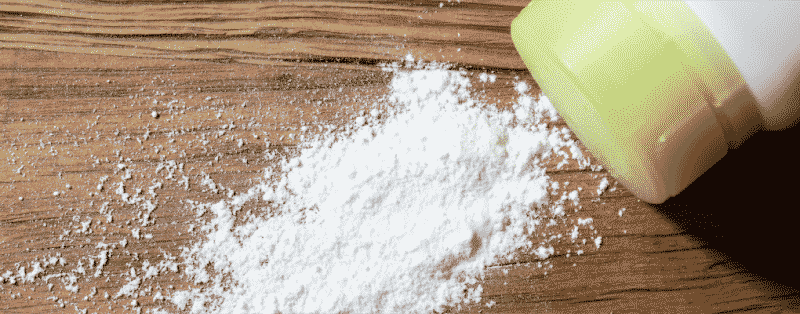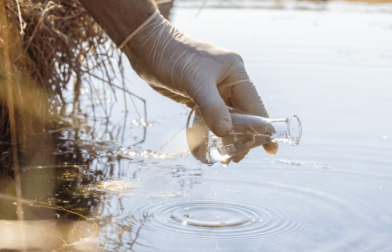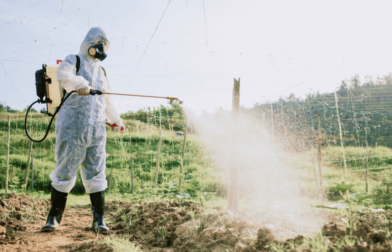FDA Holds Public Meeting on Testing for Asbestos in Talc

The talcum powder industry’s self-regulating days may be over.
Increased national concern over asbestos in talcum powder propelled the U.S. Food and Drug Administration (FDA) to unite regulators, experts, and industry personnel at a recent public meeting. This came in response to the agency’s recommendations for more precise, standardized, and strict testing of talc-based cosmetics and hygiene products.
Why Did the FDA Hold This Meeting?
The meeting comes on the heels of a growing public outcry against talcum powder. In recent years, a number of lawsuits have claimed that baby powder sold by Johnson & Johnson contained asbestos, and using it caused customers to suffer from deadly cancers.
Nearly 17,000 lawsuits against the hygiene conglomerate have been filed as of 2020.
In response to the public concerns, the FDA founded the Interagency Working Group on Asbestos in Consumer Products (IWGACP), a team consisting of representatives from eight different federal agencies. The agency held a public meeting on February 4, 2020, to garner public comment on the issue.
The IWGACP — as well as most developed nations and the World Health Organization (WHO) — concur that there is no safe level of asbestos exposure.
Yet until recently, the FDA had done little in the last 50 years to update the tests it uses to detect asbestos in talcum powder. The agency also claimed it could not force companies to test their products or report their own results.
Instead, the FDA trusted Johnson & Johnson and similar companies to voluntarily conduct their own testing on asbestos in talcum powder.
That changed last year when the FDA finally conducted its own testing on a bottle of Johnson’s baby powder purchased from an online retailer and discovered it was contaminated with asbestos.
This led Johnson & Johnson to voluntarily recall 33,000 bottles of the product — though the company continues to insist its own tests found no asbestos.
Who Was Involved in the Meeting?
The meeting assembled experts from the federal agencies that make up the IWGACP.
These agencies include:
- Consumer Product Safety Commission (CPSC)
- Department of Interior’s U.S. Geological Survey (USGS)
- Environmental Protection Agency (EPA)
- Food and Drug Administration (FDA)
- National Institute of Environmental Health Sciences (NIEHS)
- National Institute of Health (NIH)
- National Institutes for Occupational Safety and Health (NIOSH)
- National Institute of Standards & Technology (NIST)
- Occupational Safety and Health Administration (OSHA)
Together, they presented preliminary findings and sought additional input from those who came to make public comments, such as attorneys representing clients who had filed suit against J&J, testing experts, consumer advocates, and industry representatives.
What Were the Major Takeaways?
Those who came forth to make public comment adamantly called for stricter requirements, such as standardized testing on talcum powder.
The IWGACP agreed that standardized testing for asbestos in talcum powder needs development and implementation by government regulatory authorities, industry personnel, and contracting laboratories.
One of the difficulties involved in testing for asbestos fibers in talc is the presence of non-asbestos particles that resemble asbestos threads.
After reviewing the research, the panel of experts determined that asbestos fibers — and non-asbestos particles below a certain size — will be referred to as “elongate mineral particle” or “EMP” since both pose health concerns.
The panel also said that transmission electron microscopy (TEM) should be used to detect asbestos in talcum powder in addition to polarized light microscopy (PLM) for more accurate test results, as current tests that use X-rays or infrared spectroscopy are less effective.
While these recommendations are only the start of an effort to eliminate asbestos from talc products, the investigative news organization Reuters reports that even these recommendations could influence scientific methods and courtroom strategy.
In the meantime, the FDA offered no timeline or definitive ruling on when — or if — it would impose standardized testing on the talcum powder and cosmetic industry.
Identifying Asbestos in Talc
Like deadly asbestos, talc is a mineral mined from the earth’s crust. Frequently, deposits of the two substances are found near each other or mixed within soil deposits together.
Because of their close proximity, talc can easily be contaminated with asbestos if not carefully tested. If tainted products reach consumers, it can can lead to health issues such as talcum powder cancer.
Until tighter restrictions are put in place, some talc-based products may contain asbestos fibers and pose a threat to human health. Anyone who has used talcum powder or other talc-based goods should know the possible health risks related to these products.
Written by: LawFirm.com
LawFirm.com makes it easier to take legal action. We have information, lawsuit guides, and breaking news about drugs, products, and other issues that could affect you.
- Hsu, T. (2020, Jan.3). Johnson & Johnson sued over baby powder by New Mexico. Accessed March 18, 2020. Retrieved from: https://www.nytimes.com/2020/01/03/business/johnson-johnson-baby-powder-new-mexico-suit.html
- Reuters.com. (2020, Jan. 10). Government experts urge new talc testing standards amid asbestos worries. Accessed on March 16, 2020. Retrieved from: https://www.reuters.com/article/us-usa-fda-talc-testing/government-experts-urge-new-talc-testing-standards-amid-asbestos-worries-idUSKBN1Z92I4
- FDA.gov. (n.d.) Talc. Accessed on March 16, 2020. Retrieved from: https://www.fda.gov/cosmetics/cosmetic-ingredients/talc
- FDA.gov. (2020, Feb. 4). Public meeting on testing methods in talc and cosmetic products containing talc. Accessed on March 16, 2020. Retrieved from: https://www.fda.gov/cosmetics/cosmetics-news-events/public-meeting-testing-methods-asbestos-talc-and-cosmetic-products-containing-talc-02042020-02042020#event-materials
- FDA.gov. (2020, Jan. 6). Executive Summary: Preliminary testing methods for asbestos in talc and consumer products containing talc. Accessed on March 16, 2020. Retrieved from: https://www.fda.gov/media/134005/download


